Stay in the know on all smart updates of your favorite topics.
Amsterdam and Haarlem launch groundbreaking sustainable artificial turf pitch innovations
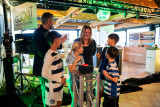
The pioneering innovations were presented of the Scale Up Future-proof artificial turf pitches project, a collaboration between Amsterdam and Haarlem focused on sustainable artificial turf pitches. Over the next few years, more than 250 sports pitches in both cities will be transformed into circular, energy-generating and climate-adaptive sports venues. These artificial turf pitches can not only generate and store energy, but also involve smart water management. An approach that is globally relevant for urban sports infrastructure.
Three consortia collaborate on the sport pitch of the future
The three selected consortia Antea Sport, EnergieVeld and GOO4iT together comprise more than 15 market players. They join forces within this innovation partnership, where there is room for long-term collaboration, co-creation and scalable innovation. The pioneering solutions will make it possible to cool down sport pitches on warm days, help dispose of and collect rainwater, make the pitches more pleasant for the users and possibly even generate energy for the surrounding area. Find out how these innovations are shaping the sport pitch of the future here.
Two municipalities: joint procurement
The Scale Up Future-proof artificial turf pitches project is a unique collaboration between two municipalities and market players. The municipalities jointly procure pooling their purchasing power and use an innovation partnership to challenge the market to test and scale up innovative and sustainable solutions. In doing so, the solutions are also scalable and transferable to other cities in the Netherlands and Europe.
From prototype to pilot fields
The first prototype fields will be constructed in Amsterdam and Haarlem in 2026, in different capacities and combining multiple innovations, where they will be extensively tested and monitored for a year. Successful concepts are then scaled up to full-scale pilot pitches and tested and monitored for another year. This will form the basis for the new standard of sustainable sports pitches, with potential for adoption in other cities around the world. At the same time, existing pitches are already being improved with the most sustainable solutions available, making an immediate impact from the start. The project thus shows how cooperation between municipalities and market players can lead to innovative, climate-proof sports infrastructure with international relevance.
Join us
This project provides cities worldwide a blueprint for sustainable, smart, and future-proof artificial turf pitches. Interested municipalities and industry partners can get in touch and subscribe to our news updates by sending an e-mail to: sportveldvandetoekomst@amsterdam.nl.
Demoday #28: Designing for Circularity in the Port of Amsterdam

During Demoday #28, we focused on one of the key challenges in the circular transition: how can we make the Port of Amsterdam fully circular?
The Amsterdam port is one of the largest in Europe. It functions as a major energy hub, where fossil fuels still play a central role, and as an industrial hub, where massive flows of raw materials pass through. The City of Amsterdam has set the ambitious goal of becoming fully circular by 2050. This means the port must transform as well. This is a complex and far-reaching task that requires collaboration and innovation.
In this work session, we zoomed in on circular design: how can we make products and processes circular from start to finish?
A closer look at the port
James Hallworth, Commercial Manager at Port of Amsterdam, opened the session by taking the group on a tour through the world of the port. Located in the western harbour area, the port has two main responsibilities. First, it ensures the smooth and safe handling of all maritime traffic on behalf of the City of Amsterdam. Second, it manages and develops the land and industrial areas around the harbour.
To tackle circularity, Port of Amsterdam applies industrial ecosystem thinking. In nature, waste does not exist, and the same principle should apply here. The port aims to build collaborative networks between companies, where waste flows from one company becomes raw materials for another. There is already significant activity around recycling and recovery, but more can be done in higher-value strategies on the R-ladder, such as repurposing, remanufacturing, and refurbishment. Circular by design is a key concept in this shift.
The port is transitioning from measuring success in tons to measuring added value. This shift also means thinking differently about space: circular systems require space to receive, process, and recover valuable materials from waste streams.
Getting hands-on with circular design
Creating a fully circular production process is easier said than done. That’s why we worked through two real-world cases: construction materials and e-bikes. Participants split into groups and explored what a truly circular production process might look like. We also explored the potential role the port could play as an enabler of circular supply chains.
Some key takeaways from the session:
• Material passports: A digital document containing material properties and origin can greatly simplify recycling and reuse.
• Monomaterials: Products made from a single type of material are much easier to separate and recycle at the end of life.
• Smart synergies: Mapping which companies can use each other’s waste flows as input can unlock huge circular potential.
• Financial incentives: Right now, circular processes are often more expensive than linear ones. Smart financial mechanisms could help bridge that gap.
• E-bike challenges: In the case of e-bikes, batteries were flagged as a challenge. Recycling them is still very difficult, and since they are mostly produced outside of Europe, it’s hard to have control over the production process.
This session invited participants to take a step back and view products through a circular lens. The port has the potential to become a key player in the circular transition, but to get there, it will need ideas, insights, and input from across the network.
<strong>Do you have ideas on how the Port of Amsterdam can become more circular? Or would you like to contribute to future sessions? Get in touch with Noor at noor@amsterdaminchange.com. A big thank you to James Hallworth from Port of Amsterdam for bringing this challenge to the network, and Yanti Slaats (Amsterdam University of Applied Sciences) for moderating the session.</strong>
Ondernemers met duurzame oplossingen gezocht voor aanbesteding
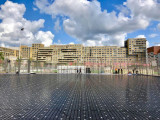
De aanbesteding Scale Up Toekomstbestendige kunstgrasvelden is gepubliceerd. Met het project dagen de gemeenten Amsterdam en Haarlem ondernemers uit om duurzame oplossingen op kunstgras sportvelden toe te passen. De inschrijving hiervoor sluit op 17 juni 2024 om 14.00 uur.
De genoemde gemeenten zijn op zoek naar partijen met innovaties op het gebied van: duurzame energie, klimaatadaptie, circulariteit of slim en schoon bouwen. De duurzame oplossingen willen ze vervolgens toepassen bij de vervanging en nieuwe aanleg van kunstgras sportvelden. Naar verwachting staan er de komende tien jaar meer dan 200 velden op het programma. Hiermee wordt verwacht een grote bijdrage te leveren aan de doelstelling van de gemeenten Amsterdam en Haarlem om in 2050 een klimaatneutrale stad te zijn.
Doe mee!
Doe mee met dit project en schrijf je in voor de aanbesteding op Mercell.
Kijk voor meer informatie op de website van het project of stel je vraag door een e-mail te sturen naar sportveldvandetoekomst@amsterdam.nl.
Disclaimer: Het project wordt medegefinancierd door het LIFE Programme van de Europese Unie. Noch de Europese Unie, noch de subsidieverlenende autoriteit kan voor de inhoud van het project verantwoordelijk worden gehouden. Aan dit artikel kunnen geen rechten worden ontleend, de aanbestedingsdocumenten zijn leidend.
Join AMS Institute's Scientific Conference, hosted by TU Delft, Wageningen University & Research, MIT and the City of Amsterdam.

Do you want to learn from and network with the best researchers and scientists working to tackle pressing urban challenges?
AMS Institute, is organizing the AMS Scientific Conference from April 23-25 at the Marineterrein, Amsterdam, to address pressing urban challenges. The event is organized in collaboration with the City of Amsterdam.
The conference brings together leading institutions in urban research and innovation, thought leaders, municipalities, researchers, and practitioners to explore innovative solutions for sustainable development in Amsterdam and other global cities.
Keynotes, research workshops, learning tracks, and special sessions will explore the latest papers in the fields of mobility, circularity, energy transition, climate adaptation, urban food systems, digitization, diversity, inclusion, living labs experimentation, and transdisciplinary research.
Attendees can expect to gain valuable insights into cutting-edge research and engage in meaningful discussions with leading experts in their field. You can see the full program and all available sessions here.
This year's theme is 'Blueprints for messy cities? Navigating the interplay of order and messiness'.
The program
Day 1: The good, the bad, and the ugly
Keynotes by Paul Behrens of Leiden University and Elin Andersdotter Fabre of UN-Habitat will be followed by a city panel including climate activist <strong>Hannah Prins</strong>. The first day concludes with a dinner at the Koepelkerk in Amsterdam: you're welcome to join our three-course meal with a 50 euro ticket.
Day 2️: Amazing discoveries
Keynotes by Carlo Ratti of MIT and Sacha Stolp of the Municipality of Amsterdam discuss innovation and research in cities. <strong>Corinne Vigreux</strong>, co-founder of TomTom, and Erik Versnel from Rabobank will participate in the city panel.
Day 3️: We are the city
Keynotes by Paul Chatterton of Leeds University and Victor Neequaye Kotey Deputy Director of the Waste Management Department of the Accra Metropolitan Assembly, Ghana. They discuss how we shape the future of our cities together. This will be followed by a city panel including Ria Braaf-Fränkel of WomenMakeTheCity and prof. dr. Aleid Brouwer of the Rijksuniversiteit Groningen.
To buy tickets: You can secure your conference tickets through our website.
Dinner tickets: On April 23 we’re hosting a dinner at the Koepelkerk in Amsterdam. Tickets for this can be added to your conference pass or bought separately.
Aanpak woningtekort: Begint met regievoering, verbinding en vereenvoudiging

De gevolgen van de woningnood manifesteren zich op vele manieren, van studenten en dertigers die nog bij hun ouders wonen tot mensen met een middeninkomen die tussen wal en schip raken, en dak- en thuislozen zonder nachtopvang. Onbetwistbaar is dat huisvestingsproblemen en het ontbreken van een stabiele woonsituatie grote sociaaleconomische gevolgen met zich meebrengen, waaronder impact op werk, gezondheid en onderwijs.
Het is dan ook niet verrassend dat het woord 'bestaanszekerheid' vaak voorkomt in diverse verkiezingsprogramma's. Het vraagstuk is urgenter en nijpender dan ooit. Er is een behoefte aan 900.000 woningen vóór 2030 vastgesteld. Daarnaast stijgt het huidige woningtekort dit jaar van 3,9 procent naar 4,8 procent, grotendeels als gevolg van toenemende migratie, ouderen die langer thuis blijven wonen en het feit dat er steeds minder mensen samen in een huis wonen.
Hoe pakken we het woningtekort aan?
In reactie op het oplopende woningtekort zei demissionair minister Hugo de Jonge (Volkshuisvesting en Ruimtelijke Ordening): “We moeten met meer tempo en meer regie, meer betaalbare huizen gaan bouwen.” Maar: hoe doe je dat in zo'n complex krachtenveld?
Lennert Middelkoop en Gijsbert Duijzer leiden het Deloitte Real Estate team dat zich bezighoudt met alles rondom woningbouw. Momenteel werken ze in opdracht van het ministerie van BZK onder meer aan het versnellen van de realisatie van tijdelijke huisvesting.
Middelkoop: “Dat is ontstaan vanuit het idee dat we, naast analyses en diepgravend onderzoek, vooral de noodzaak zagen om te helpen bij het tekort aan realisatiekracht.”Duijzer: “We staan nu met onze voeten in de klei en zijn inmiddels betrokken bij zo'n 230 woningbouwprojecten door heel Nederland. We helpen onder meer woningcorporaties, bouwers, gemeentes, provincies, nutspartijen, en kijken wat er nodig is om de projecten van de grond te krijgen en richting realisatie te brengen. We spreken iedereen, werken met alle partijen samen, en maken op die manier verschil.”
Knelpunten
Duijzer en Middelkoop benadrukken dat het een complex vraagstuk is. Ze zien vier belangrijke knelpunten die de realisatie van huisvesting bemoeilijken. Draagvlak en locaties is een eerste punt. Middelkoop: “We merken dat er op bestuurlijk, politiek en maatschappelijk niveau vaak discussie en terughoudendheid is om bepaalde locaties toe te wijzen aan aandachtsgroepen, zoals arbeidsmigranten.” Duijzer: “Ruimte is schaars en er is altijd wel een reden te bedenken waarom er iets anders op een bepaalde plek moeten komen. Zeker als het gaat om mensen die momenteel niet tot de gemeenschap behoren van een bepaalde gemeente.”
Een tweede knelpunt is de business case die, zowel voor tijdelijke als reguliere huisvesting, op dit moment vaak niet rond te krijgen is. Duijzer: “Oorzaken zijn onder meer de stijgende rente en de hoge grond- en bouwkosten, waardoor de kosten van woningen te veel stijgen. Tegelijkertijd kun je de huurprijzen in de sociale huursector nauwelijks verhogen. Bovendien worden locaties nu vaak tijdelijk vergund voor een periode van maximaal 15 jaar, wat onduidelijkheid schept over de toekomst van deze woningen. Dit resulteert in een negatieve business case.”
Ruimtelijke ordening is een derde knelpunt. Duijzer: “De regelgeving rondom ruimtelijke ordening was al ingewikkeld, en de nieuwe omgevingswet zal bij veel gemeenten waarschijnlijk eerst vooral tot onzekerheid en vertraging leiden.” Middelkoop: “Iedereen heeft het recht er iets van te vinden, en er spelen vaak veel belangen. Denk bijvoorbeeld aan de regels voor bezwaar en beroep of de flora- en faunawet. Het is belangrijk dat we regelgeving hebben voor dit soort zaken, het gaat immers over belangrijke thema's als leefbaarheid en duurzaamheid, maar op dit moment ontbreekt een integrale uitvoering.”
Het laatste knelpunt is nutsvoorzieningen. Duijzer: “In veel delen van het land is er netcongestie en een tekort aan materialen en personeel bij netbeheerders, wat leidt tot lange wachttijden voor elektriciteitsaansluitingen.”
Het laatste knelpunt is nutsvoorzieningen.
Duijzer: “In veel delen van het land is er netcongestie en een tekort aan
materialen en personeel bij netbeheerders, wat leidt tot lange wachttijden voor
elektriciteitsaansluitingen.”
"Om verschil te maken als overheid, moet je een uitvoerende regie pakken."
Actieve betrokkenheid bij projecten
De grote vraag is hoe je binnen dit krachtenveld laveert en vooral wat dan wel werkt in de aanpak van het woningtekort. Als je als overheid verschil wilt maken, moet je een uitvoerende regie pakken, stellen Duijzer en Middelkoop. “Sturen door actief betrokken te zijn bij projecten”, zegt Duijzer. “Alleen op die manier kun je eigenaar worden van het probleem en echt snappen wat er in praktijk speelt. Actieve betrokkenheid legitimeert bovendien het beleid en helpt om de echte knelpunten te identificeren. Dat heeft tot gevolg dat je beleid en interventies kunt ontwikkelen die echt iets oplossen.”
Middelkoop: “Regie vanuit de Rijksoverheid is nodig. Als het gaat om draagvlak en locaties is het een illusie om te denken dat gemeenten daar alleen doorbraken zullen forceren. Daar ligt een taak voor de hele overheid.”
Duijzer: “De overheid moet locaties aanwijzen, maar dat moet wel hand in hand gaan met de uitvoering. Als je als Rijksoverheid actief en constructief betrokken bent bij de realisatie van woningbouwprojecten, en op basis daarvan locaties aanwijst, is dat veel effectiever en zal dat meer geaccepteerd worden dan wanneer je op afstand beleid formuleert.”
Middelkoop: “Een bindend beleidskader dat aanwijzen mogelijk maakt, heeft bovendien tot gevolg dat het voorspelbaar wordt waar in Nederland voor welke ruimtelijke invulling gekozen wordt. Daar is veel behoefte aan, ook bij professionele partijen die nu vaak moeten anticiperen op vele mogelijkheden en dan terugdeinzen voor grote investeringen zoals een robotlijn in een woningfabriek.”
Problemen vereenvoudigen
Volgens Duijzer en Middelkoop is er naast sturing en betrokkenheid bij de uitvoering van projecten nog een belangrijke rol weggelegd voor de Rijksoverheid: het verminderen van complexiteit. Middelkoop: “Bij de 230 projecten waar we bij betrokken zijn, zijn we continu bezig met het aanpakken van alle beren op de weg. We nemen elk probleem afzonderlijk ter hand en proberen het op te lossen."
"Ga in de bouwkeet of bij het projectteam zitten en vraag: wat hebben jullie nodig om een woning sneller neer te zetten?"
Duijzer: “Projecten lopen vaak vast door een overvloed aan uitdagingen. Het werkt echt om deze één voor één te lijf te gaan. Daarbij is het wel van belang dat alle partijen samenkomen, lef tonen en bereid zijn om concessies te doen.”Middelkoop: “Naast het geven van richting en het begrijpen van de lokale situatie, is het eveneens de taak van de Rijksoverheid om alle relevante partijen bijeen te brengen om samen te zoeken naar oplossingen. Het klinkt zo simpel, maar we merken vaak dat mensen soms jaren over elkaar kunnen praten, terwijl ze elkaar amper kennen.”
Het is verre van makkelijk om Nederland op een goede manier in te richten als het gaat om woningbouw. Middelkoop en Duijzer zeggen daarom: draai het om. Als het zo complex is op een plek, ga dan naar die plek toe om te praten met de betrokken partijen. Middelkoop: “Voer regie, zodat de uitvoering daar baat bij heeft, en niet andersom. Geef bindend richting en help waar nodig. Ga in de bouwkeet of bij het projectteam zitten en vraag: wat hebben jullie nodig om een bepaald type woning sneller neer te zetten? En pas dáár vervolgens je randvoorwaarden, beleid en regie op aan.”
Duijzer: “Regie en uitvoering zijn niet los van elkaar te zien. Als je draagvlak wilt creëren voor die regierol, hoort uitvoering daar altijd bij. Durf je te verhouden tot individuele projecten en ga ermee aan de slag. De rest volgt vanzelf. Na een bezoek aan een bouwkeet, gemeentehuis, woningcorporatie of participatieavond, ga je altijd naar huis met het idee: het kan anders, simpeler, en minder complex.”
AMS Conference: Final call for submissions & keynote speaker announcement

We're thrilled to share another round of exciting updates on the AMS Conference (April 23-24, 2024). As a quick reminder, the submission deadline has been extended to November 14th, providing you with an opportunity to be a contributor to this multi-dimensional event celebrating urban innovation and sustainability. Submit your abstract, workshop, or special session here 👉 https://reinventingthecity24.dryfta.com/call-for-abstracts
🎙️ Meet our keynote speaker: Charles Montgomery
We are honored to introduce Charles Montgomery, an award-winning author and urbanist, named one of the 100 most influential urbanists in the world by Planetizen magazine in 2023. Charles Montgomery leads transformative experiments, research, and interventions globally to enhance human well-being in cities.
His acclaimed book, Happy City, Transforming Our Lives Through Urban Design, explores the intersection between urban design and the emerging science of happiness. His presentation at the AMS Conference, "Your city should be a trust machine," delves into the critical role of trust in human happiness and societal success. As the world grapples with a trust deficit, Charles Montgomery shares insights drawn from over a decade of using lessons from behavioral science and psychology to turn cities into better social machines.
🚀 Don't miss your chance to contribute to the future of cities! For more details about submissions and to submit your abstract, workshop, and/or special session, visit our conference website 👉 https://reinventingthecity24.dryfta.com/call-for-abstracts
Minecraft Almere Pampus Challenge: pushing the boundaries to build the city of the future

In today's dynamic landscape, the key to success lies in collaboration. The Green Innovation Hub firmly believe in the power of partnerships between companies, government and educational institutions to drive innovation, growth and positive change. In a world where technology connects us in unique ways, the Minecraft Almere Pampus Challenge exemplified the power of communities coming together to achieve remarkable feats.
It's inspiring to witness the incredible work of our young talents. They are the architects of the future and they're currently building virtual cities where companies can find their next digital solutions. Whether you represent a company, government department, or educational institution, we invite you to connect and explore how we can collaborate to make a meaningful impact on our shared goals.
1. Fresh Perspectives: young talent brings fresh and innovative perspectives to the table. They're unafraid to challenge the status quo and reimagine how things can be done.
2. Cutting-Edge Tech: these virtual cities are powered by the latest technologies from Microsoft and Iamprogrez. Companies can tap into this tech-savvy generation to incorporate cutting-edge solutions into their operations.
3. Collaboration Opportunities: collaborating with these digital pioneers can lead to mutually beneficial partnerships. Your company can gain a competitive edge while offering mentorship and growth opportunities to the next generation.
Find the Green Innovation Hub (NL Pavilion) at the Smart City Expo World Congres in Barcelona, and let's meet each other. Together, we'll keep pushing the boundaries of what's possible in the Minecraft universe and to build the house – or even the city of the future. Also stay tuned for upcoming advantures, events and challenges on our channels.
Watch the video: https://youtu.be/4F7CFGfb2HE
Harnessing Bio-Based Construction to Beat Carbon Budgets and Preserve Our Planet
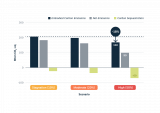
The construction sector is projected to exceed its carbon budget by 2026 using current construction practices.
But by constructing half of new residential buildings with bio-based materials, we can actually reduce CO2 emissions by 18% by 2030. That’s according to Metabolic's latest research, made possible through funding from Built by Nature. And if we consider carbon sequestration, we can even reduce the impact of the residential construction sector by 52%.
However, if solely focusing on carbon, we must be mindful not to shift the burden to other planetary boundaries. In our research, we discuss topics such as sustainable wood supply, climate change risks, and land use change. Based on our findings, we propose six steps to consider to realize a sustainable biobased construction sector.
AMS Conference 2024: Call for abstracts and special sessions

We invite you to contribute to the conference "Reinventing the City 2024 - Blueprints for messy cities?"
Deadline to submissions: November 14, 2023
Notification of acceptance: December 14, 2023
submit here>>
The AMS Scientific Conference (AMS Conference) explores and discusses how cities can transform themselves to become more livable, resilient and sustainable while offering economic stability. In the second edition of “Reinventing the City” (23-25 April 2024), the overarching theme will be <em>"</em>Blueprints for messy cities? Navigating the interplay of order and complexity'. In three captivating days, we will explore 'The good, the bad, and the ugly' (day 1), 'Amazing discoveries' (day 2) and 'We are the city' (day 3).
Call for abstracts
The AMS Conference seeks to engage scientists, policymakers, students, industry partners, and everyone working with and on cities from different backgrounds and areas of expertise. We therefore invite you to submit your scientific paper abstract, idea for a workshop or special session with us. Submissions should be dedicated to exploring the theme ‘Blueprints for messy cities?’. We especially invite young, urban rebels to raise their voice, as they are the inhabitants of our future cities.
Assessment
Our scientific committee responsible for the content of the conference program will assess all submissions and select a final program of contributions. Notification of acceptance will follow before 1 December 2023.
Topics
mobility | circularity | energy transition | climate adaptation | urban food systems | digitization | diversity | inclusion | living labs | transdisciplinary research
SUBMISSIONS AND CONTRIBUTIONS
| SCIENTIFIC PAPER ABSTRACTS |
We invite academics, industry partners, and professionals from all ages engaged in the related fields of urban design, governance, architecture, data science, engineering and/or sociology to submit an abstract for a conference presentation of your scientific paper (250-450 words).
| WORKSHOPS |
If you have a workshop proposal, please outline its purpose, the specific knowledge, techniques, or practices it covers, its objectives and learning outcomes, teaching strategies and resources, target audience, and any prerequisites, including the required level of experience (250-450 words).
| SPECIAL SESSIONS |
Next to scientific papers and workshops, we encourage you to submit different types of special sessions. These special sessions can include interactive forums, excursions, or practical demonstrations, depending on the subject and objectives. When submitting your proposal for a special session, we ask you to clearly highlight the session's objectives, expected collaborators (if applicable), the intended audience, and the type of session. Please also indicate whether you prefer an online or in-person format. Please note that you will be responsible for the content and organization of the session (250-450 words).
Click here to visit the event page and find more information on details about the Scientific Conference.
De stad van de toekomst bouwen ze in Almere in Minecraft
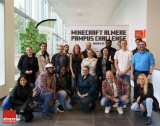
Met een spetterende kick-off door Justin Edwards, Director of Learning Programmes van Microsoft, zijn 200 studenten van hogeschool Windesheim Flevoland vandaag in teams gestart met het in Minecraft bouwen van het nog te realiseren stadsdeel Pampus. Bijzonder omdat Almere als tweede stad na London start met een Minecraft challenge voor de realisatie van een nieuwbouwopgave. Het winnende studententeam van Windesheim mag haar concept van 7 – 9 november presenteren in het Holland paviljoen tijdens de Smartcity Expo World Congres in Barcelona.
De komende anderhalf jaar biedt Almere honderden jongeren tussen de 8 en 21 jaar op deze unieke manier de kans om zelf op de stoel van de architect te zitten en zo mee te denken over grote maatschappelijke vraagstukken. Basisschoolleerlingen en studenten bouwen op hun eigen niveau aan een virtueel Almere Pampus. Dit als plek waar zij in de toekomst zelf willen wonen. Dit stadsdeel bouwen ze met een speciale versie van Minecraft Education Edition.
Wethouder Maaike Veeningen van Almere (Economische ontwikkeling, hoger onderwijs): ‘we dagen leerlingen tot 21 jaar uit om met oplossingen te komen voor vraagstukken op het gebied van duurzaam, energiezuinig en inclusief bouwen. Op deze manier leren zij bijvoorbeeld over het gebruik van Artificial Intelligence (AI), Virtual Reality (VR) en robotisering bij het ontwikkelen van een nieuw stadsdeel. Zo betrekken we onze toekomstige inwoners bij het bouwen aan de ideale stad van de toekomst.’
Toekomstige leefomgeving
Het toekomstige Almere Pampus wordt in het zuidwesten van Almere gebouwd, met meer dan 30.000 woningen en 16.000 arbeidsplaatsen. Projectdirecteur Almere Pampus en senior stedenbouwkundige bij de gemeente Almere Paola Huijding over de Minecraft Challenge: “Deze leerlingen zijn misschien de toekomstige bewoners van Pampus. Hiermee bouwen we aan woon- en werkplekken omringd door water en groen. Het is daarom zo mooi dat juist de toekomstige generatie nu meedenkt over hun leefomgeving.”
Digitaalvaardig
De speciale editie van Minecraft die de studenteams gebruiken is ontwikkeld door Iamprogrez. Het gebruik ervan moet op een speelse en laagdrempelige manier bijdragen aan een digitaal vaardige samenleving. Scholieren krijgen zo inzicht in de banen van de toekomst. Ook kunnen zij in een buddysysteem ouderen meenemen in hun digitale kennis en vaardigheden.
Fleur van Beem, Executive Director bij VodafoneZiggo: “Het vooruithelpen van twee miljoen mensen in de samenleving willen wij bereiken door initiatieven als Online Masters, een online lesprogramma voor scholen over de digitale wereld. De Minecraft Challenge sluit hierop naadloos aan en het is natuurlijk fantastisch om dankzij gamification jongeren digitaalvaardig te krijgen.”
Bouwen aan innovatieve concepten
De leerlingen kunnen alleen of in teams werken aan de challenge en krijgen hiervoor een digital skills-certificaat. Na de ontwerpfase, kunnen zij hun toekomstige visie op Pampus uploaden op de website van de Green Innovation Hub (GIH). Een groep experts kiest de winnaar. Danny Frietman, Projectdirecteur van de GIH: “De winnende uitkomsten van de Minecraft Challenge vormen de basis voor ons om start-ups en scale-ups uit te dagen om de concepten van de scholieren daadwerkelijk in de praktijk te brengen.”
“Hoe ziet het er dan uit”
Kijk HIER naar de video aankondiging van de eerder gehouden Minecraft-challenge in Londen. Daarin zie je duidelijk hoe de challenge werkt en welke mogelijkheden Minecraft hiervoor biedt.
Fotografie Daan Klunder, Almere City Marketing
Circularity in the Construction Sector: Experiences from The Netherlands and Denmark

On Thursday, September 7, Amsterdam Smart City hosted a knowledge exchange for a delegation of leaders and CEOs from Denmark’s construction sector. The exchange was part of a study program organized by the Construction Section of the Confederation of Danish Industry in partnership with the Danish Embassy in The Hague, to help transfer Dutch best practices for circular construction to Denmark.
The exchange provided an opportunity for Dutch and Danish colleagues to learn from each other’s experiences on how to transition the construction sector to a more sustainable state. This is imperative since the construction sector is responsible for approximately 10% of CO₂ emissions, and a third of all waste streams in both countries. At the same time, both countries have high ambitions for transitioning to sustainability: the Netherlands aims to transition to a fully circular economy by 2050, while Denmark aims to reduce greenhouse gas emissions by 70% by 2030.
After an introduction to the Amsterdam Smart City program, Merlijn Blok from Metabolic shared the experience of Amsterdam in transitioning to a circular built environment. Merlijn highlighted several projects and best practices including:
- De Ceuvel: In 2012, Metabolic teamed up with a group of architects to develop a former polluted shipyard into a “clean technology playground” by repurposing discarded house boats into workspaces for creative entrepreneurs. The project fused sustainability, technology, and art, firmly planting the seed for more creative and circular area developments in Amsterdam North and beyond.
- Schoonschip: Building on the experience and lessons from De Ceuvel, Metabolic got involved in a community-driven project that aimed to build a sustainable floating community. Driven entirely by future residents, Schoonschip was built with a high ambition of circularity, with special attention paid to biobased materials which are key to reducing the environmental footprint of construction projects.
- Roadmap Circular Land Tendering: Scaling up isolated circular construction projects requires dedicated instruments to stimulate, measure and mandate circularity in the built environment, for instance through procurement. The Roadmap Circular Land Tendering is one of city of Amsterdam’s main instruments embedding the principles of circular construction in tender procedures. With it, the city of Amsterdam wants to contribute to the development of a national standard for circular building.
Central to the discussion was the question of how to move beyond ambitions towards making concrete and measurable progress on circularity in the built environment. On this topic, it was inspiring to learn from the Danish experience. The delegates shared that the Danish government has developed a “National Strategy for Sustainable Construction” which limits the CO₂ emissions permitted in construction projects, with new requirements being phased into the building code in 2023. The regulations apply to new buildings of more than 1,000 m2 and set a limit of 12kg CO₂-eq/m2/year based on Life Cycle Assessment (LCA) over 50 years. This limit is expected to be tightened in the upcoming years, thereby forcing the construction sector to incrementally decarbonize over the next decade. Such mandates are foreseen but not yet implemented in the Netherlands, providing an opportunity to learn from Denmark’s trailblazing approach. However, the Danish colleagues already shared some words of caution if Netherlands should adopt a similar approach: since the Danish regulation limits CO₂ impact per square meter, the regulation does little to incentivize construction of smaller dwellings which is one of the most important, though often overlooked measures in reducing the impact of the construction sector. As Danish colleagues explained, the overarching trend in Denmark is towards construction of larger dwellings, which is fundamentally at odds with the country’s sustainability goals. Other mechanisms are therefore needed to mandate more compact development.
The exchange provided valuable insights and cross-pollination of approaches between Danish and Dutch colleagues on a topic central to the transition to the circular economy. As leaders in the sustainability transition, the Netherlands and Denmark have a tremendous opportunity and responsibility to showcase the way to circular construction and to help scale this approach internationally.
<em>Are you working on innovative and transferable policies which can accelerate the transition to circular construction and sustainable built environment? Or do you have a circular project or challenge you would like to share with the Amsterdam Smart City network? Share your reflections and experiences in the comments below or send an email to noor@amsterdamsmartcity.com to discuss possibilities for collaboration.</em>
SAVE THE DATE | 10 Okt. - Kans voor ondernemers met duurzame oplossingen

Ben je een ondernemer met een duurzaam product of dienst en wil je écht impact maken? Kom dan naar het matchmaking evenement voor het unieke aanbestedingstraject Scale Up Toekomstbestendige kunstgrasvelden van de Gemeente Amsterdam en Haarlem. Elke ondernemer, die bij kan dragen aan innovatieve en duurzame toepassingen op en onder kunstgrasvelden, is welkom!
Datum: dinsdag 10 oktober 2023
Tijd: 13.30 – 18.00
Locatie: Johan Cruijff ArenA
Aanmelden
Meld je hier alvast aan als deelnemer van het evenement. Het definitieve programma volgt.
Tijdens dit evenement:
- Maak je kennis met het project Scale Up Toekomstbestendige kunstgrasvelden;
- Kom je erachter hoe ook jouw bedrijf hieraan kan bijdragen;
- Ontmoet je andere ondernemers met dezelfde visie;
- Word je geïnspireerd en uitgedaagd om out-of-the-box te denken;
- Vind je de perfecte match om later mee te doen aan de aanbesteding.
Meer informatie
Voor dit evenement zoeken we expliciet bedrijven uit diverse branches, die samen willen werken om het sportveld van de toekomst te ontwikkelen. Kijk hier voor meer informatie over dit project.
Disclaimer: Het is niet verplicht om deel te nemen aan het matchmaking event om mee te kunnen doen met de aanbesteding.
Met vriendelijke groet,
Team Scale Up Toekomstbestendige kunstgrasvelden
New series: 25 building blocks to create better streets, neighbourhoods, and cities

This article is the introduction to the series 25 building blocks for better streets, neighbourhoods and cities, which you can read every Tuesday and Friday starting next week. The link below refers to an overview of all upcoming posts.
It often strikes me how much people agree about the quality of the living environment. Many, especially younger ones, prefer a house built in the '30s. Older neighbourhoods almost always score higher than modern ones, due to the alleged lack of atmosphere, sociability, and intimacy in the latter. Urban planners, architects and politicians would like to change this, and they are doing so. Slowly.
In urban planning a breeze of fresh air comes in.
How cities in Europe currently look stems largely from the ideas of Le Corbusier through his role in the Congrès Internationaux d'Architecture Moderne (CIAM). The Dutch architect and urban planner Cornelis van Eesteren was also a prominent representative. The influence of the Congress is visible in the spacious post-war residential areas with their long rows of single-family houses and medium-rise buildings. The underlying idea was to design a functional city in which living, working, shopping and recreation all have their own separated places.
Slowly, the voice of a new generation of urban planners in which Jane Jacobs and Jan Gehl (pictures above) play a prominent role became louder. They detest post-war urban expansion and advocate mixing urban functions. 70 years after the publication of her book The Death and Life of Great American Cities, Planetizen magazine predicated urban activist Jane Jacobs as the most influential urban planner ever, even though she never studied this field. Jan Gehl, who did, follows in second place. By the way, Anne Hidalgo, the mayor of Paris, is in 7th place; not because of what she studied but of what she put into practice.
Many others, including representatives of New Urbanism, play an important role in further developing the ideas of Jacobs and Gehl. For instance, they put back on the agenda the return to the 15-minute city. ‘New urbanists’ also top the list: Andres Duany, the author of Suburban Nation at four and Jeff Speck, who authored Walkable City, at ten.
The concept of high-quality living environment
Many contemporary ideas about urban development come together in the concept of high-quality living environment. A compact definition of this concept is improving human well-being in a condensing city. I have collected and clustered references to characteristics of high-quality living environments in many recent publications into 25 building blocks. Each block deals with one aspect of the quality of the living environment, or in other words the creation of better streets, neighbourhoods, and cities. Consider this a tribute to the mission of the Amsterdam Smart City community, of which I was a curator for several years.
I hope you get inspired and support the use of these building blocks.
Green Innovation Hub Contest 2023!
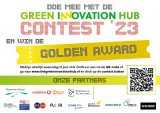
Green Innovation Hub Contest 2023! "Pitch voor Impact"
In Flevoland en Almere worden de komende jaren 130.000 nieuwe woningen gebouwd. De grootste bouwopgave van Nederland! Heb jij een innovatief product of dienst waarmee jij kunt bijdragen aan duurzame en inclusieve leefomgeving. En impact kunt maken op deze regio én de rest van Nederland. Doe dan mee met de Green Innovation Hub Contest 2023 en win de Golden Award.
🏆 Een trip naar Smart City Expo 2023 in Barcelona, coaching door expert, gratis office space, ondersteuning bij businesscases en modellen door partners, V.I.P.-tickets voor Ziggo Dome concert naar keuze en nog veel meer prijzen.
Hoe werkt het?
1️⃣ Doe mee en maak impact met jouw product of dienst.
2️⃣ Meld je uiterlijk woensdag 21 juni vóór 23.59 uur via de onderstaande link.
3️⃣ Op donderdag 22 juni maakt de jury bekend welke start-ups
en scale-ups mogen pitchen.
4️⃣ Mag je pitchen, dan nemen wij contact met je op zodat jij
jouw pitch goed kunt voorbereiden.
5️⃣ Woensdag 5 juli is de Green Innovation Hub Contest Day
waarbij je mag pitchen!
Wil jij deelnemen aan de contest of ben je geïnteresseerd om naar de pitches te kijken? Meld je dan nu aan via de onderstaande link.
New research: 6 strategies for building homes in the Netherlands within planetary boundaries
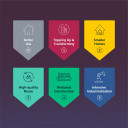
The Netherlands has a housing problem: Too many people, and not enough homes. The country plans to build 100,000 new homes each year through 2030.
But can the country build this much without exceeding our planetary boundaries?
In partnership with Copper8, NIBE, and Alba Concepts, Metabolic has proposed six strategies. When combined, these could reduce total CO2 emissions from construction by up to 33% and the use of raw materials by 40%.
Do you want to learn more? Find all the details in their newest research, which was presented last week in Amsterdam!
Centre of Expertise City Net Zero feestelijk gelanceerd!
Op 21 maart zijn we als City Net Zero feestelijk gelanceerd op de Knowledge Mile in Amsterdam. Lees hier een impressie terug over de dag en kom graag met ons in contact voor samenwerking!
Lees hier over de kick-off
Living with nature
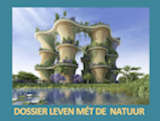
Today an article in the NRC about nature in the city. Last week, I published a new e-book (in Dutch) about this topic. Interested? Download it for free.
New research on Smart Building Maintenance

Interested in hearing more about Smart Building Maintenance? Feel welcome to join the public defense of the PhD thesis “Crafting Intrapreneurial Stewardship – An institutional perspective on client-led innovation in smart building maintenance“ by Koos Johannes, PhD student in the department of Construction Management. The defense will take place on the 16th of January at 10:30 AM at the Waaier building at the campus of the University of Twente.
About the the PhD thesis
Available research suggests that construction clients, as building owner-occupier, are struggling to implement smart maintenance. This thesis assumes that these reported problems are due to a failure to fully understand the institutional complexities of smart maintenance commissioning in organizational networks. Hence, the aim of this thesis was to improve our understanding of these complexities and to develop theoretical and practical knowledge on the professionalization of construction clients in commissioning smart maintenance through stewardship. Stewardship theory portrays managers and employees as collectivists, pro-organizational and trustworthy, and can be used for designing collaborations based on intrinsic motivation and trust.
The defense will take place on the 16th of January at 10.30 AM at the Waaier building at the campus of the University of Twente.
A summary of the thesis can be read here.
If you want to receive a copy of the thesis, please send a message to: k.johannes@hva.nl
The presentation and defense will be in English; a Dutch summary is available.
Address: Hallenweg 25, 7522 NH, Enschede (see map for parking on the Campus; with public transport the Campus can be reached from train stations Hengelo or Enschede).
City of Haarlem winner of Rising Innovative City 2022
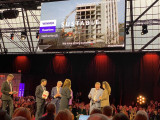
Amsterdam Smart City congratulates Haarlem with this prestigious award of the European Commission.
And the winner of the Rising Innovative City 2022 is: the city of HAARLEM in the Netherlands. Congrats on this great achievement to make Haarlem and the Amsterdam Metropolitan Region an even more liveable place for the people who live, work and play.
Let this award be a further stimulation of great things to happen to improve the quality of life of citizens and make Haarlem a digital and social inclusive society. #EICSummit22
Amsterdam Smart City hopes to welcome you (back) as a valued partner in our ecosystem!
New Smart Energy Community Event scheduled on October 11: in-person meetup.

Join our speed date and engage with 3 great speakers at the first in-person Smart Energy Community meetup on October 11th!
Topics Smart Energy Community October 11:
Home Energy Management Systems in practice
Now that we are installing more and more heat pumps and EV chargers in homes, there is more and more need for energy management. How does this work? How to deal with cyber security and what role do protocols play? ElaadNL developed its own showcase house where this is put into practice. Arjan Wargers of Flexiblepower Alliance Network & ElaadNL discusses the lessons learned.
Power pitch ATEPS: Energy and storage
ATEPS develops, builds and supplies systems based on batteries that store energy. Jos Theuns (ATEPS) explains how they make storage of sustainable energy accessible, safe and attractive through smarter management of electrical energy. Due to the modular construction of ATEPS systems, they are suitable for both small and larger customers.
Power pitch withthegrid: Teleport
How do you connect PV, wind, battery, EV chargers and heat pumps without losing your mind in all protocols and without cloud lock-in? Paul Mignot (Withthegrid) discusses their new innovation Teleport. This gives customers maximum insights and control over their assets in minutes.
Speed dating, networking & visit demonstration house
In the second half, connecting with other professionals is central. During these speed dating sessions, you will get to know fellow innovators, share project ideas and explore opportunities for collaboration. There will be ample opportunity for discussion after the meeting. At the same time, you can take a tour of ElaadNL's new demonstration home for smart energy services, where various smart devices are optimised for home energy management.
Stay up to date
Get notified about new updates, opportunities or events that match your interests.

